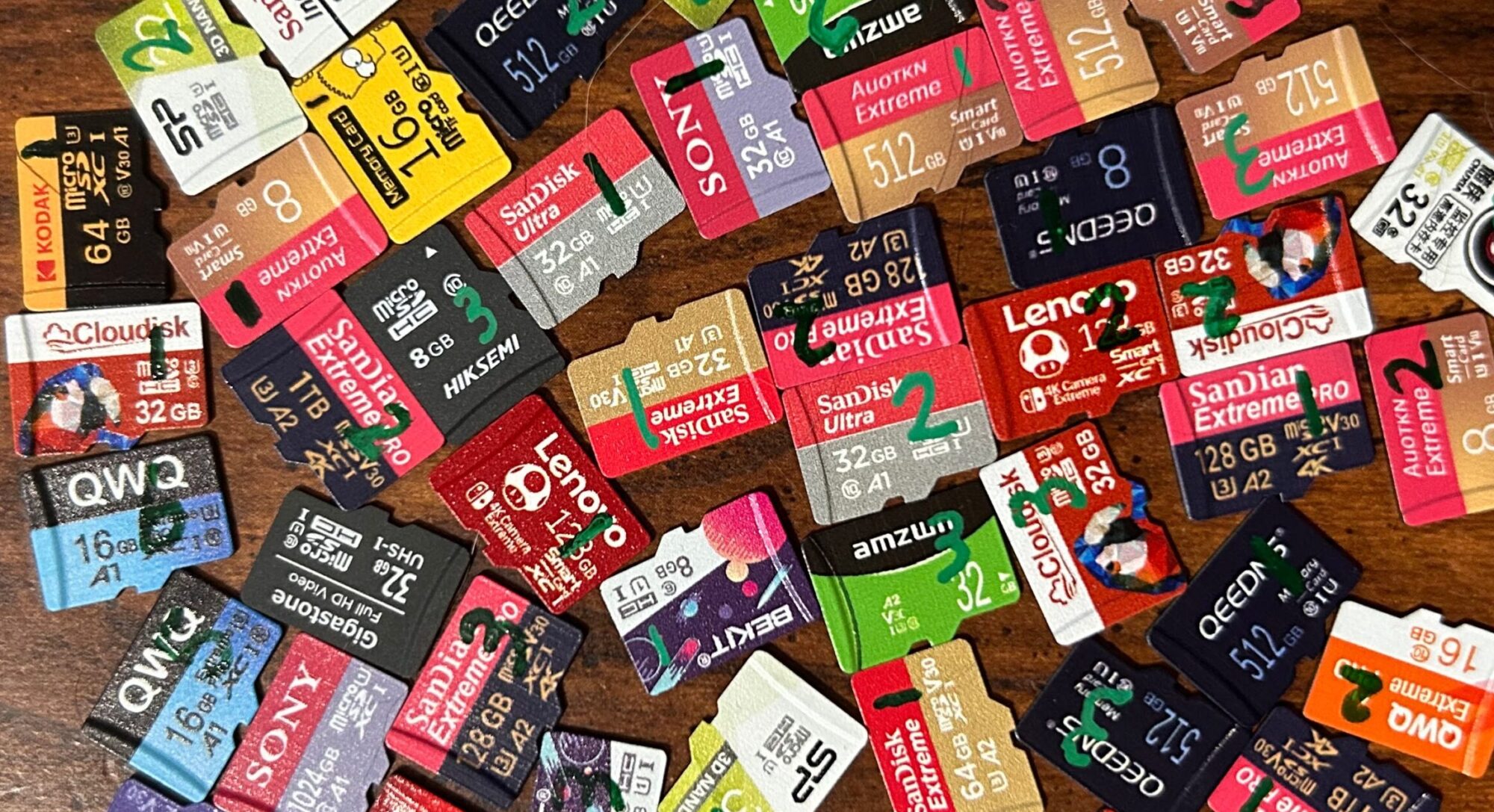SanDian (not to be confused with SanDisk) is a name that came up frequently while browsing though microSD cards on AliExpress. It’s very clear that they were attempting to trick buyers into thinking that they were SanDisk — offering a similar product lineup (Ultra, Extreme, Extreme PRO, etc.), using the same color scheme on their cards, and even copying the stylized “n” and “D” from the SanDisk logo.
Spoiler: These cards didn’t hold a candle to SanDisk’s.
These cards failed the criteria that I set out for determining what’s considered a name-brand card; and given the similarities to SanDisk, I’ve categorized these as knockoffs.
These cards were fake flash (as I suspected they would be when I purchased them), with actual capacity being closer to about 32GB. In addition, the manufacturer ID and OEM ID were set to all zeroes — a hallmark of a seller that doesn’t want anyone to know who made their cards for them.
On performance, they did pretty terribly, with all metrics scoring in the bottom 25% of all cards I’ve tested thus far. These cards bear the U3, V30, and A2 marks — and no sample scored well enough to qualify for any of these marks. On top of that, the SSR data didn’t indicate that it supported any of these speed grades — at best, it supports Class 4.
On the endurance testing front, the results I got were pretty consistent with low-quality flash:
Sample #1 started experiencing errors after completing just 41 read/write cycles, and the number of errors only increased as time went on. By the end of round 1,284, it had passed the 50% error threshold. Here’s the graph of this card’s progression:
Sample #2’s first error was a data loss error during round 663. It continued to progressively degrade until it got to just shy of the 10% failure mark, at which point it stopped responding to commands. Here’s what the graph of this card’s progression looked like:
Sample #3’s first error was a 32-sector wide data loss error during round 24. It survived a total of 1,938 read/write cycles before it crossed the 50% failure threshold (though it took a number of manual resets to convince it to keep working up to that point — which is part of the reason why it lasted longer than the other two samples). Here’s the graph of this card’s progression:
Overall? They’re fake flash, they performed below average in every metric, and they couldn’t go more than a few hundred read/write cycles before showing issues. These cards are trash. Don’t buy them — this is just someone looking to make a quick buck off of SanDisk’s name.
November 3, 2025

